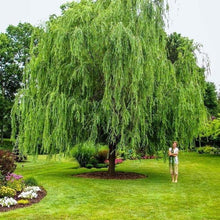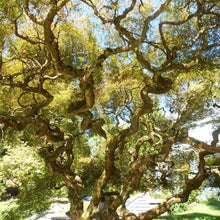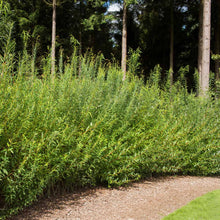Willow Trees
These hardy shade trees are sturdy, beautiful trees that are cherished all over the US and the world. They are fast growing and adaptable to a variety of soils and environments. They also help prevent soil erosion. Most willow trees have elongated leaves, slender branches, and a large, strong root system. A willow tree is a perfect addition to your landscape if you are looking for shade, size, or show!
More Information



